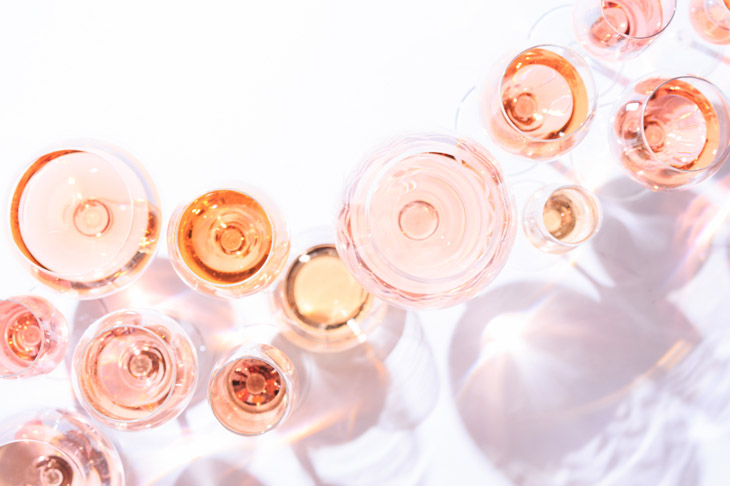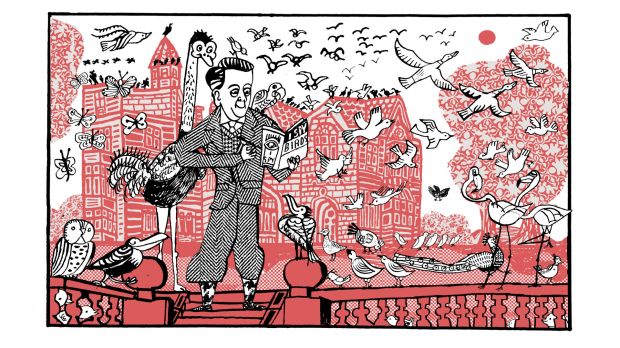When we first moved to the Languedoc, the less poncey part of the south of France nearly 20 years ago, there were two kinds of rosé. The first, piscine rosé as the French dubbed it, was thin, pale and uninteresting. It was best served in a large glass full of ice cubes, preferably around a swimming pool by a tanned French girl in a bikini. The second, darker in hue and fuller of flavour, carried the scent of the garrigue, thyme, lavender and rosemary. It went well by the pool, of course, served by anyone in a bikini, but was equally good with merguez sausages and pork chops grilled over vine logs.
But just as the grey squirrel pushed the red squirrel to the edges of civilisation, so has pale rosé pushed its darker cousin to the verge of extinction. It is now extremely hard to buy a bottle of rosé that isn’t as pale as a Scotsman in November. At a wine tasting the other evening with one of my favourite wine makers, the lovely Françoise Ollier of Domaine Ollier–Taillefer, I remarked on this. ‘It is impossible,’ she wailed. ‘Unless they are pale we cannot sell them.’
The rot set in about ten years ago when an Englishman called James Ivey wrote a book called Extremely Pale Rosé about a quest to find the palest rosé in Provence. It was a good enough joke, but unfortunately it was taken seriously. Soon, from Sloane Square to Pampelonne Beach, ladies who lunch could be heard repeating the mantra ‘I want the palest rosé you have.’ Husbands were taught that pale rosé brought kudos and kisses, and because they didn’t know any better, they embraced the movement with devotion.
This apartheid is as misguided as it is nonsensical. When Frederick Forsyth moved to Paris in the 1960s he was taken to lunch by his Reuters boss, who waved away the sommelier’s suggestion that they might drink white or rosé wine. ‘Wine is red,’ he barked. Indeed, though as any fule kno, nearly every grape juice is white. Wine gets it colour, and generally a lot of its flavour, from contact with the skins. To make an extremely pale rosé, contact with the skins must be as limited as possible. The result? Pale and uninteresting wines, without taste or aroma.
Calling for the palest rosé is as misguided as asking your waiter to bring you the most tasteless tomatoes they have in the kitchen, or decaffeinated coffee, or a Pink Lady apple. There is more diversity in taste, more flavours and greater complexity in white wine, but does this stop the women in beige and their husbands from ordering ultra pale rosé? Not in the slightest.
The makers of pale rosé often use white wine to dilute the colour, without any sense of shame. Or they use an agent that strips the colour out of the wine. This is wine making by Pantone number. It may be delivered in frosted glass bottles with clever lids and names such as Whispering Angel or Domaine Ott, but at more than £20 a bottle, it’s got everything but taste. Medieval alchemists would be delighted to find their descendants turning cheap white wine into expensive pale rosé.
There are a few exceptions. Like the villagers in the Asterix books, the only place in Gaul that held out against the Roman invasion, Jean-Claude Mas, the creator of the Arrogant Frog brand, continues to make bottles of rosé that have colour, body and taste. ‘The best way to make rosé with flavour is to use Syrah grapes and to use a technique called saignée, literally bleeding the juice,’ says Jean-Claude. ‘The grapes are ripe when we pick them, they have some contact with the skins, then we bleed off the juice and it ferments on its own. The colour is deeper than might be fashionable in London, but the wine has an aroma and a taste.’
But beyond the Arrogant Frog and a few other recusants, is there any end in sight to this crass takeover, or have we reached peak pale? As the poet Jean Villon might have said if he hadn’t been talking about snow, ‘Où sont les rosés d’antan?’ Alas, there seems no end in sight to this madness. The terrible weather this spring in the south of France, the wettest in living memory, does mean that unscrupulous wine makers can add water to their meagre crops, thus making the palest rosé ever. Like water, only more expensive, with at least the merit of being alcoholic.
Got something to add? Join the discussion and comment below.
Get 10 issues for just $10
Subscribe to The Spectator Australia today for the next 10 magazine issues, plus full online access, for just $10.
You might disagree with half of it, but you’ll enjoy reading all of it. Try your first month for free, then just $2 a week for the remainder of your first year.














Comments
Don't miss out
Join the conversation with other Spectator Australia readers. Subscribe to leave a comment.
SUBSCRIBEAlready a subscriber? Log in